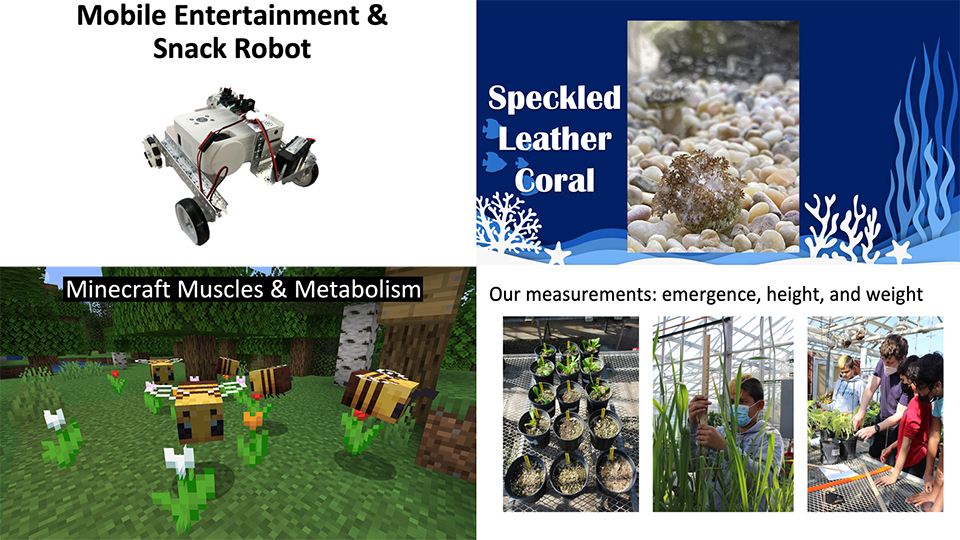When one imagines what 6th-8th grade students might be interested in, these projects may not immediately come to mind: studying metabolism in the Minecraft universe, investigating whether toxic frogs know they are toxic, printing 3D corals, building a robot that can deliver snacks or one that can plant seeds, and designing an anti-drone weapons device. And yet, these six studies were successfully completed by students from Franklin STEAM Academy.
Six groups of 3-10 students met every Tuesday afternoon after school to carry out their research projects. From September 2021 till May 2022, they consulted with researchers from the Carl R. Woese Institute for Genomic Biology and a dozen students from University Laboratory High School, or Uni High to develop their ideas.
The STEAM (Science, Technology, Engineering, Arts, and Mathematics) TRAIN (Transdisciplinary Research Across Institutional Near-peers) project was initially selected for stage 1 funding by the University of Illinois’ Community Research Partnership Program (CO+RE) in 2020. The grant, which was subsequently awarded stage 2 and stage 3 funding, is used to fund partnership events between researchers and community members.

Organized by the IGB’s Outreach Senior Activities Coordinator Daniel Urban, Franklin’s Magnet Site Coordinator Zanne Newman, and Uni High’s chemistry teacher Melinda Tidrick, STEAM TRAIN aims to inspire independent, curiosity-driven student research through interactions with near-peer mentors. Franklin students discover their love for science by exploring difficult issues that they’re passionate about while the Uni High students serve as mentors. The idea is to create a chain of people who are closer in age to improve communication.
After a meeting only virtually in 2020, this year the students met online for the first half of the year and then met in person later on. “Everyone, students and mentors alike, preferred meeting in person, as evidenced by the consistent higher attendance for in-person activities,” said Urban. “There is no way to do the truly fun things, like building a robot or slingshotting seeds in the greenhouses, over Zoom.”
The final student presentations were carried out in May and each group explained the inspiration behind their project, how they carried out their research, their findings, and how they would like to proceed in the future.
“The students were amazing to work with. They were so excited and passionate about science!” said Daniel Ryerson, an Outreach Activities Coordinator at the IGB. “It is always great to see the creativity and enthusiasm students bring to scientific questions. They ask such insightful questions that it is easy to forget how young they are.”
The results of these projects ranged from astonishing to delightful. In the realm of artificial intelligence, the students were able to build a home entertainment robot that can zoom over with snacks while projecting movies; design an anti-drone weapons device that used animal-inspired characteristics such as echolocation and the flight dynamics of birds; and compare a ground-based robot with wheels to a drone to test which one can plant seeds better. The other three projects were inspired by biology. One group made 3D printed coral structures to build homes for coral larvae. Another discovered that frogs may know how toxic they are; the most toxic ones are often the most adventurous. And the final group made the surprising discovery that Minecraft characters are actually slower than humans on a 100-meter test track. However, when they’re allowed to consume potions and are forced to run at their maximum speeds, they outrun the current world record.
“These students created some phenomenal projects, a few of the them literally being of graduate school caliber. It’s awe inspiring to realize what such young kids are capable of when they are provided with the resources and mentorship to bring their ideas to life,” Urban said.
